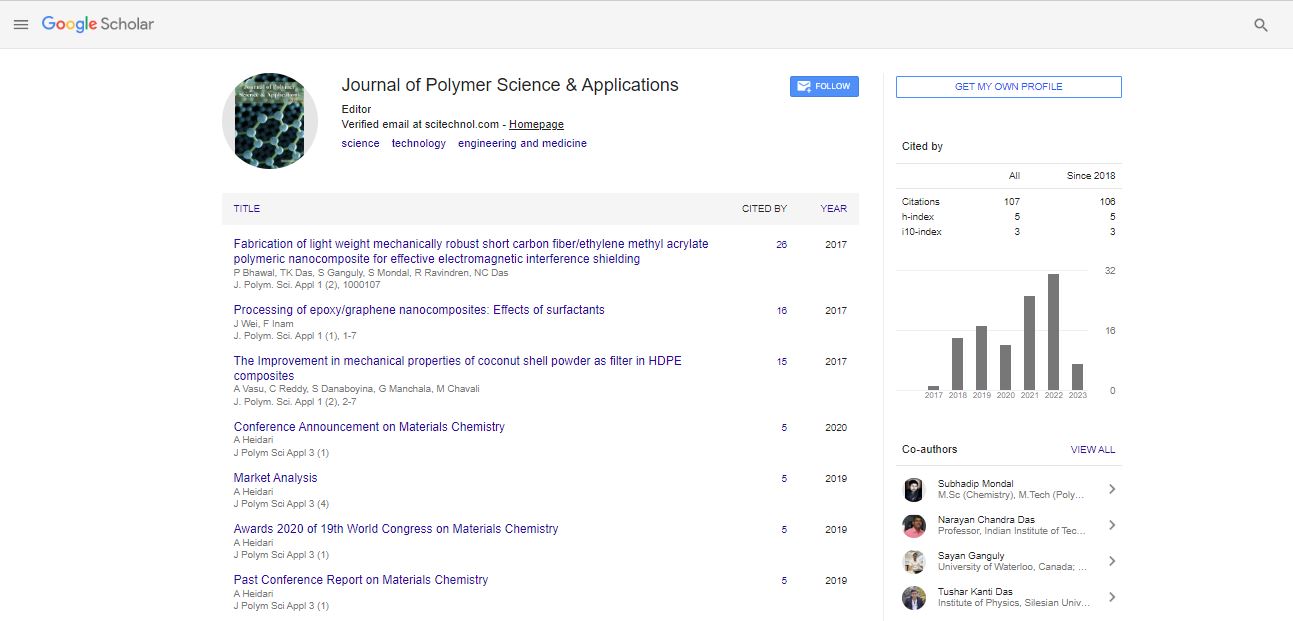On-line transition between incompatible catalysts
Nayef Enazi
SABIC, Saudi Arabia
: J Polym Sci Appl
Abstract
During the production of olefin polymers in a polymerization reactor it will often be necessary of transition from one type of catalyst system producing polymers having certain properties and characteristics to another catalyst system producing polymers having different specifications. The developed process relates to transition between two incompatible catalysts in continuous polymerization reaction, utilizing advanced Ziegler-Natta catalyst system and chromium-based catalyst. The transition process is performed with no discontinuity to the reactor operation, where, it starts with the first catalyst in continuous polymerization reaction of ethylene and alpha olefin co-monomer for producing a linear low density polyethylene (LLDPE) in a gas phase reactor to the second catalyst and different co-monomer for producing a high density polyethylene (HDPE). The transition process comprising initially a feed reducing of the first co-monomer into the reactor until the ratio of co-monomer to ethylene in the reactor is less than zero. Then, discontinuing the first catalyst of Ziegler-Natta while the introduction of a co-catalyst of the Ziegler-Natta catalyst is continued and subsequently discontinuing the introduction of the co-catalyst. The polymerization conditions in the reactor are kept with no change in this stage and permitting polymerization of LLDPE to continue for a time. Then, discontinuing the introduction of all feeds into the reactor, depressurizing, flow-purging the reactor and introducing more ethylene and other feeds to prepare the reactor for the new conditions for the second polymerization reaction, wherein the partial pressure of ethylene is increased to the pressure for the second polymerization reaction at such a speed that the reactor temperature is maintained at a temperature lower than the temperature of the first polymerization conditions. After that, reactor temperature to be increased to a temperature of the chromium-based catalyst polymerization conditions and starts feeding the catalyst into the reactor. Then, the second co-monomer is introduced into the reactor to obtain a reactor composition for HDPE polymerization reaction.
 Spanish
Spanish  Chinese
Chinese  Russian
Russian  German
German  French
French  Japanese
Japanese  Portuguese
Portuguese  Hindi
Hindi 